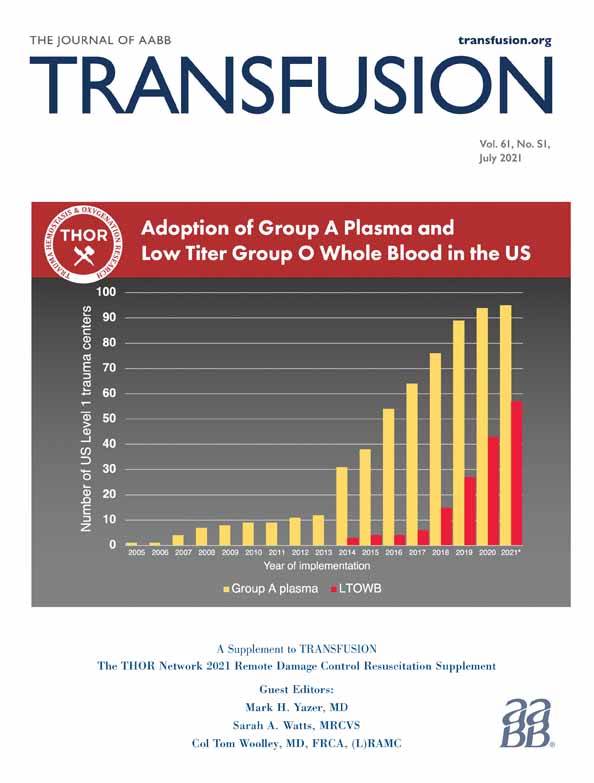Efficacy of the compensatory reserve measurement in an emergency department trauma population
Funding information: U.S. Department of Defense, J9 Research and Development Directorate, Grant/Award Number: J917EC07
Correction added on 2nd Sep 2021, after first online publication: Figures 1 and 2 were swapped and author names in References 2 and 30 were updated.
Abstract
Background
The Compensatory Reserve Measurement (CRM) is a novel method used to provide early assessment of shock based on arterial wave form morphology changes. We hypothesized that (1) CRM would be significantly lower in those trauma patients who received life-saving interventions compared with those not receiving interventions, and (2) CRM in patients who received interventions would recover after the intervention was performed.
Study design and methods
We captured vital signs along with analog arterial waveform data from trauma patients meeting major activation criteria using a prospective study design. Study team members tracked interventions throughout their emergency department stay.
Results
Ninety subjects met inclusion with 13 receiving a blood product and 10 a major airway intervention. Most trauma was blunt (69%) with motor vehicle collisions making up the largest proportion (37%) of injury mechanism. Patients receiving blood products had lower CRM values just prior to administration versus those who did not (50% versus 58%, p = .045), and lower systolic pressure (SBP; 95 versus 123 mmHg, p = .005), diastolic (DBP; 62 versus 79, p = .007), and mean arterial pressure (MAP; 75 versus 95, p = .006), and a higher pulse rate (HR; 101 versus 89 bpm, p = .039). Patients receiving an airway intervention had lower CRM values just prior to administration versus those who did not (48% versus 58%, p = .062); however, SBP, DBP, MAP, and HR were not statistically distinguishable (p ≥ .645).
Conclusions
Our results support our hypotheses that the CRM distinguished those patients who received blood or an airway intervention from those who did not, and increased appropriately after interventions were performed.
CONFLICT OF INTEREST
The authors have disclosed no conflicts of interest. Opinions or assertions contained herein are the private views of the authors and are not to be construed as official or as reflecting the views of the Department of the Air Force, the Department of the Army, or the Department of Defense.




